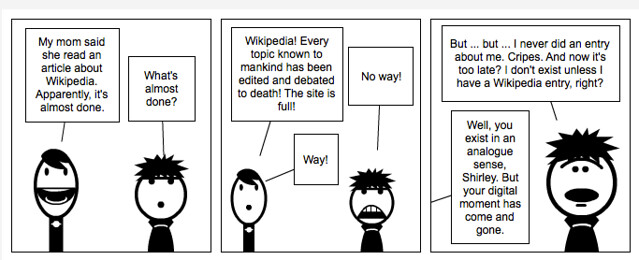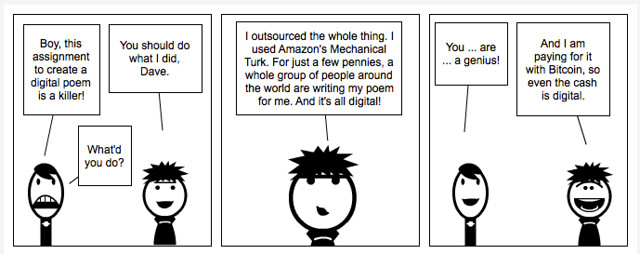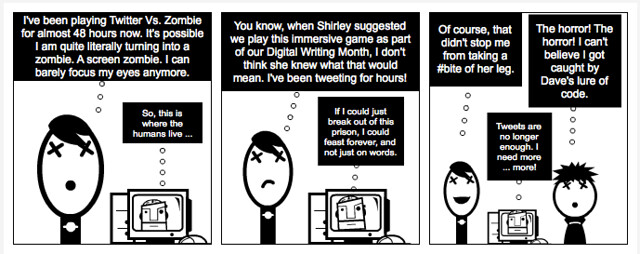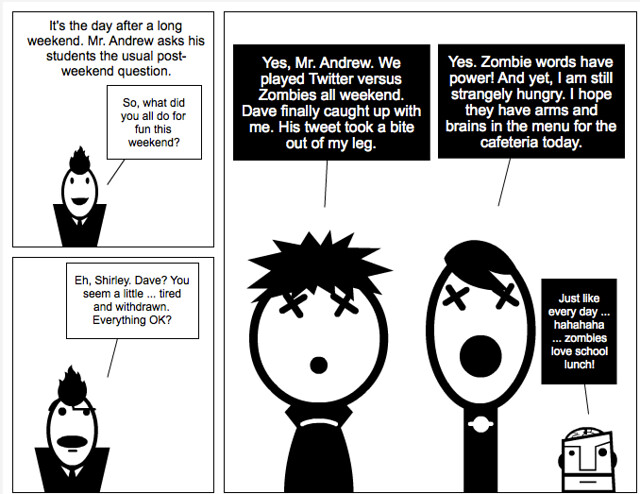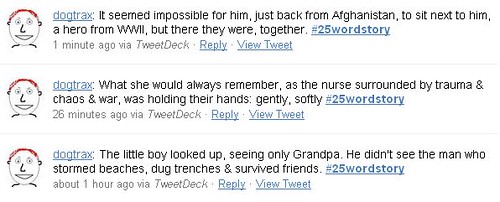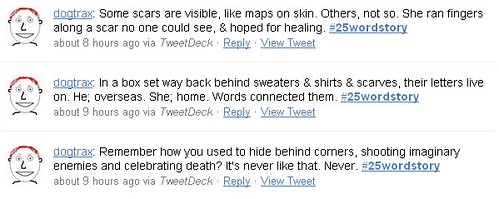
I’ll be sharing pieces of my experiences here in Las Vegas at the National Writing Project Annual Meeting over the coming days (today, it is on to NCTE). I attended a number of very interesting sessions yesterday, and co-presented one around game design. I also joined 600 NWP colleagues in the main plenary sessions where we wrote (naturally) and got inspired by some terrific speakers.
What stuck out for me over the course of a very full day, however, was something rather surprising and for me, unexpected. I was reminded once again about the power of the narrative. I say surprising because the shift to the Common Core has reduced how narrative writing might figure in our classrooms, in favor of informational, expository and argumentative writing.
But, starting in the first session I attended around Systems Design and Digital Writing, I realized that so much of this theory around elements shaping outcome, and how the parts define the whole, and how one twist in an element can potential alter the system is pretty close to what we do when we write a story. We add a character, toss in a plot twist, design a story through its parts for a larger meaning. It’s really a narrative understanding of the world.
And the keynote speakers at the big session — Jeff Wilhelm, Michael W. Smith, and Jim Fredricksen — have written three books centered on some main elements of the Common Core, but all three spoke passionately about the ways that narratives inform our lives, and provide a framework (again, a system) for understanding. So, when Wilhelm was talking about how making lists for informational text and understanding is one way of organizing our understanding, he also noted how we use narrative to put those lists in order in a meaningful way. The other two speakers touched on narrative, too.
And then, in both our gaming session (where narrative is the design backbone of my game design project, but with a science theme), and in a last session around tools that allow you to compose/hack the web, we talked again about how story and narrative are an essential thinking framework.
All this is heartening. I know the Common Core doesn’t remove narrative, but it does minimize it, and that worries me as a teacher and a writer. If we can find more ways to weave those strands together, of remixing narrative in the scope of informational/expository writing, so that writers have more options, then we are providing an interesting road ahead for our students.

Peace (in Vegas),
Kevin
